MUSHROOM CORALS / FUNGIIDAE
The mushroom coral is a special type of stony coral because, unlike most other species, it does not live in colonies but is solitary, freely mobile, and unique due to its mushroom-like shape.
It is easy for us divers to recognize. They lie in the reef or simply on the ground.
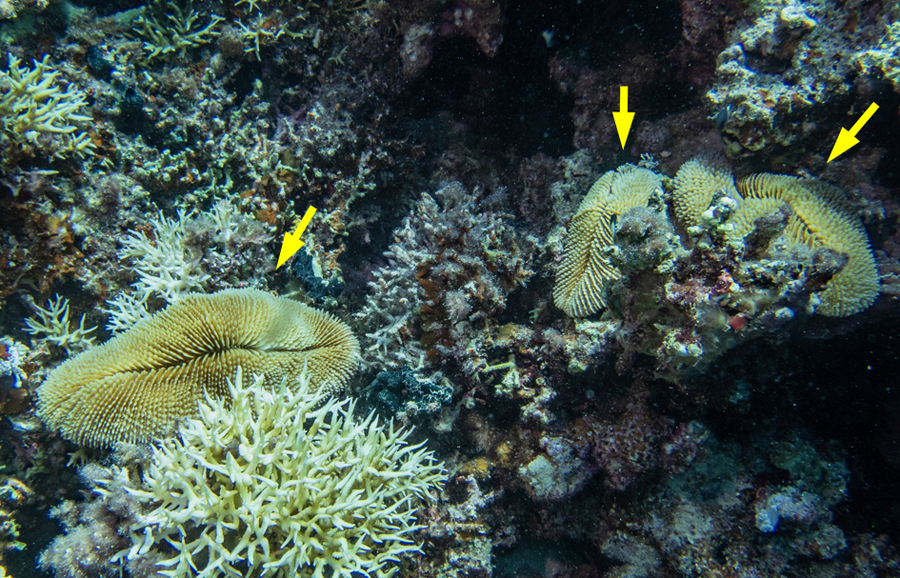
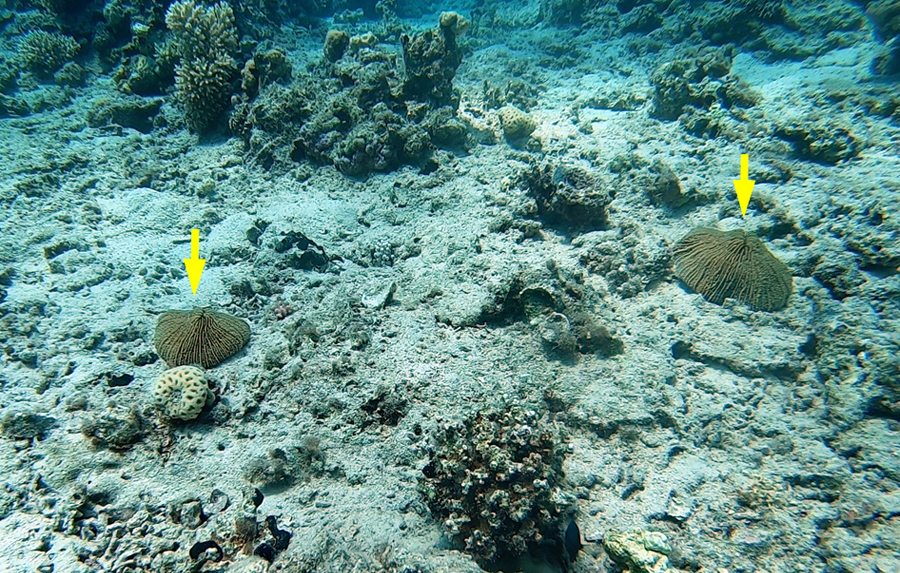
The mushroom coral consists of only one coral polyp that lives alone and not in a community with many other polyps, as is the case with other stony corals.
Within the order of stony corals, the mushroom coral family has only eleven scientifically described species.
Of these, divers mainly see the four species.
CLENACTIS CRASSA
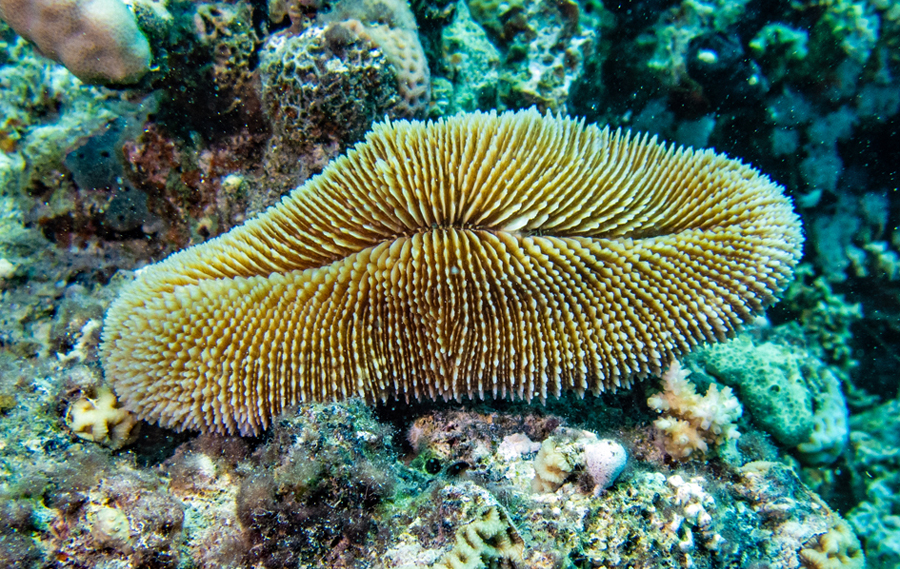
FUNGIA PUAMOTENSIS
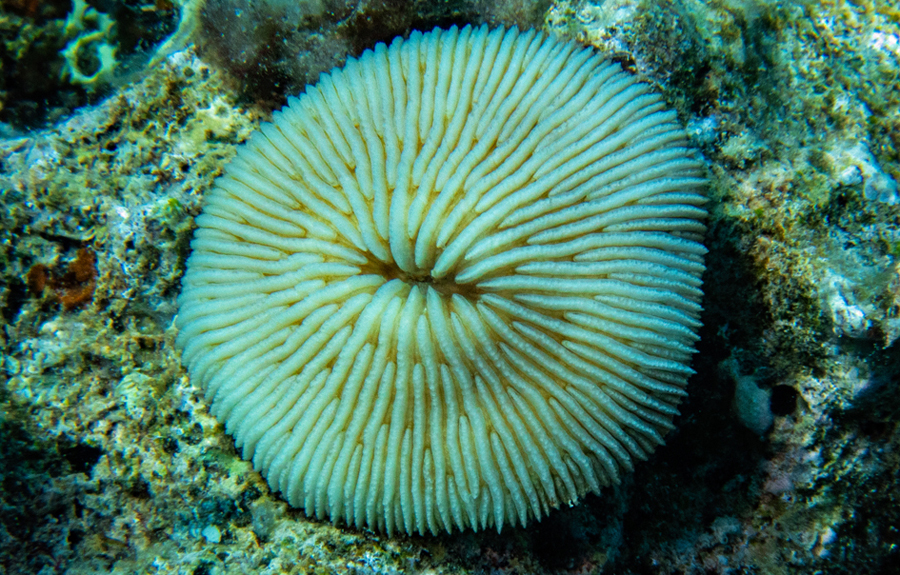
FUNGIA SRUPOSA
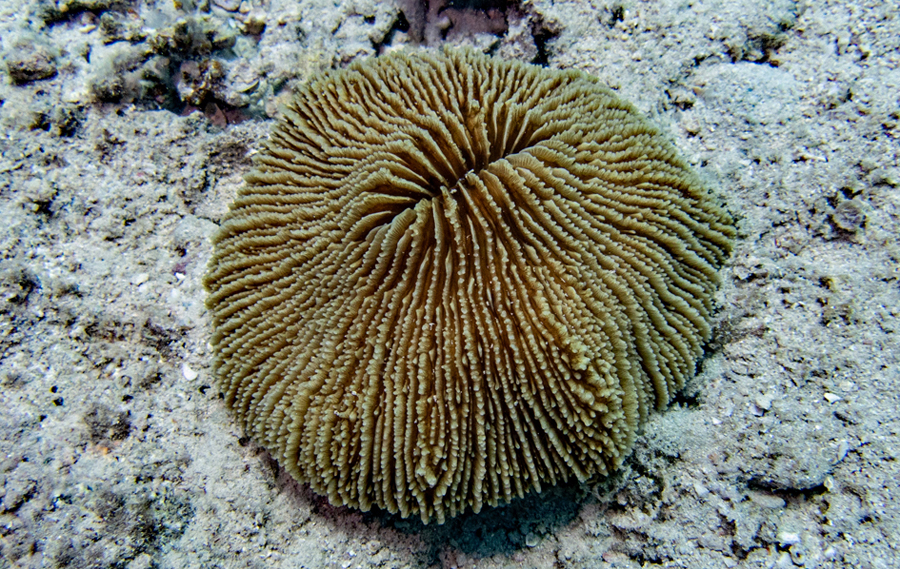
HERPOLITHA LIMAX
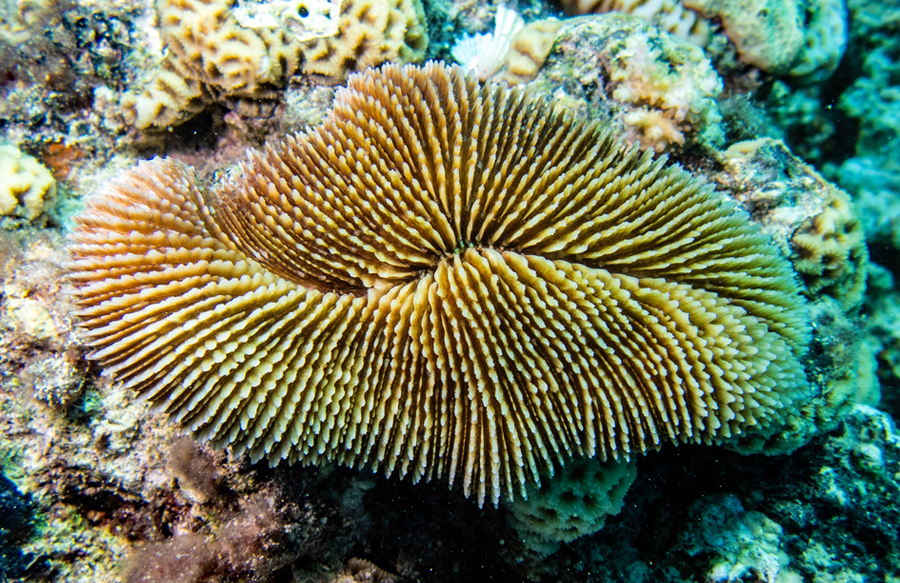
Mushroom corals can move because they have an unusually flexible, muscular body, despite their solid calcareous skeleton.
They have muscle fibers in their polyp tissue that allow them to arch and contract, generating small thrusting movements that enable them to change their position slowly but independently. Another special feature is their ability to inflate themselves to shed sediment or sand when they become partially covered.
What do mushroom corals eat?
Since mushroom corals consist of only one polyp, they are very large in contrast to multi-polyped stony corals, and their diet is correspondingly varied.
First and foremost is photosynthesis via zooxanthellae. Zooxanthellae are algae that live in symbiosis with the corals and have the ability to convert light into energy while producing sugar and other nutrients that are fed to the corals. Fungus corals can also actively absorb small particles, plankton, and bacterial plankton from seawater.
How fast do mushroom corals grow and how large do they become?
Fungus corals grow up to 1 cm in diameter per year. They are therefore slow-growing animals and can live for several decades. They grow more slowly as they get older. The heavy and wavy fungus coral reaches a diameter of around 25 cm when fully grown. The oval and fork fungus coral grows significantly larger, reaching a length of up to 60 cm.
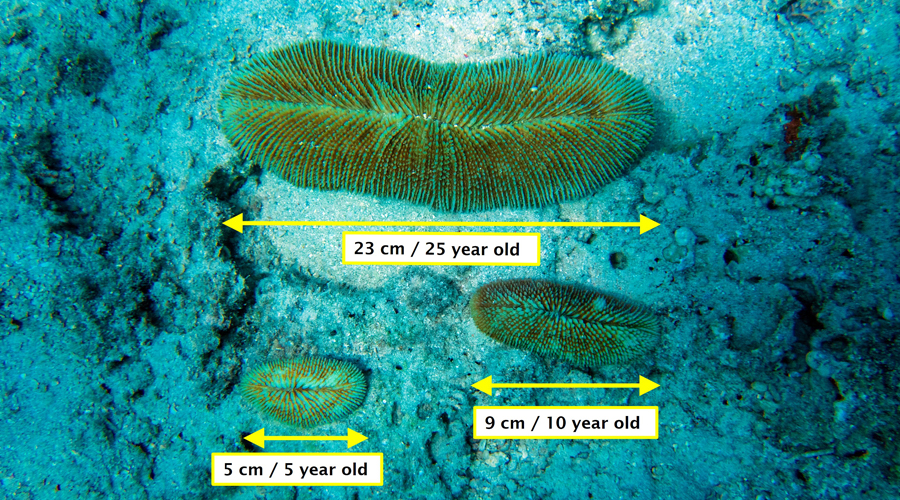
How do mushroom corals reproduce?
Like other stony corals, mushroom corals reproduce by producing eggs and sperm in the coral polyp. When these are sexually mature, they are released into the open water, where fertilization takes place. The resulting larva settles on the bottom and develops into a new mushroom coral polyp.
A second type of reproduction is budding and the formation of daughter corals. If a mushroom coral is injured or its skeleton breaks, a new coral can develop from the remaining tissue. Similarly, new animals can develop from broken pieces. This is called fragmentation, a type of self-healing that also leads to reproduction.
Photos: Johann Vifian
Sources: Wikipedia / Korallenriffführer / World Register of Marine Species
